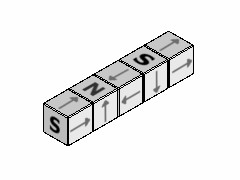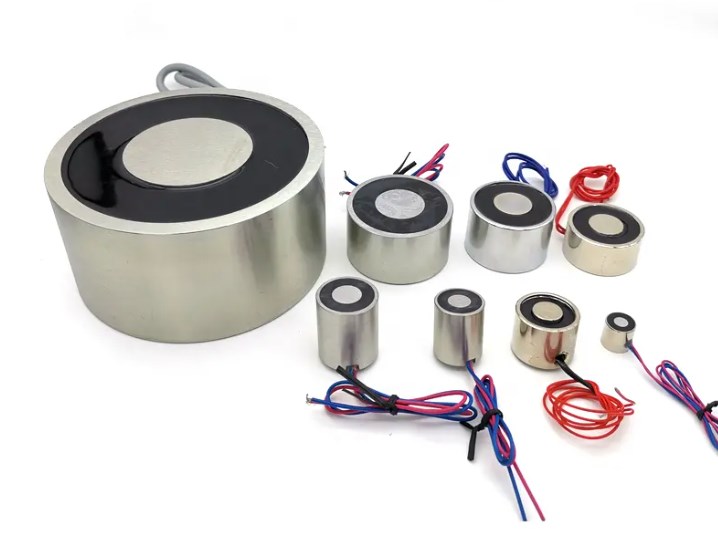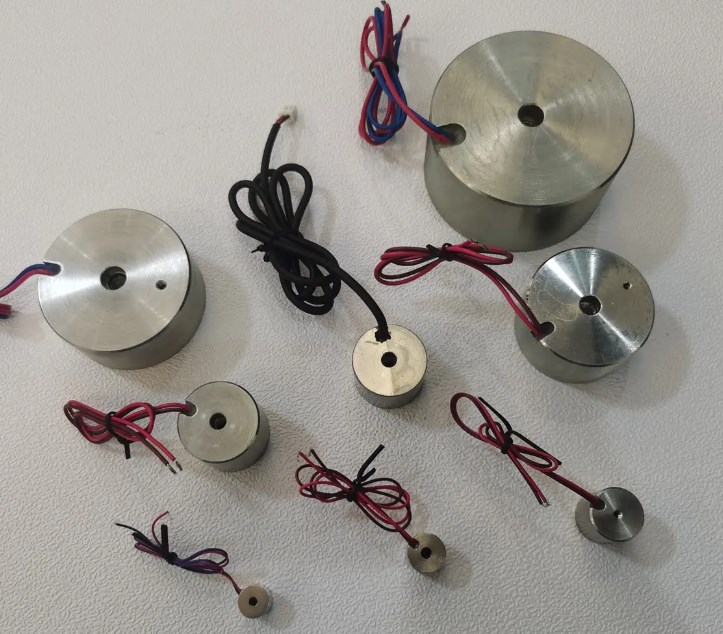What are Halbach Arrays, and What are They Used for?
Named after the physicist Klaus Halbach, who discovered the phenomenon in the 1980s, a Halbach Array is a unique arrangement of permanent magnets, in which the magnetic field on one side of the array (of magnets) is stronger while canceling the field to near zero on the other side of the arrangement. In the picture below, you'll notice that the collective magnetic field of the magnets is strongest on one side — the upper side of the area — and almost nothing or very weak on the lower side. This is in contrast to the regular arrangement of magnetic fields in normal magnets. If you look at the magnet shown below, you'll see how it has an equal distribution of the magnetic field on both sides of the magnet. The study of Halbach arrays shows that it has very useful applications in many industrial processes. In this article, we'll walk you through how to create Halbach arrays and look at a few of the applications of this interesting arrangement of magnets.
Creating a Straight Halbach Array Example
If you put together 5 single magnets with their north poles all pointing in the same direction, you'll notice that you'll achieve a strong magnetic field that is equally distributed on both sides of the arrangement. This is magnetically similar to a single magnet, only that strength of the magnetic field is weaker. To create a straight Halbach Array, we can improvise with 5 cubes of permanent magnets (2PA & 2PE magnets). These magnets can be drilled with a hole through their middle to allow for the passage of a thread or small rod. This makes it much easier to hold the magnets together. The 2PA magnets are arranged to be parallel to the direction of magnetization, while the 2PE magnets are positioned perpendicularly to the magnetization direction. As you can see from the illustration below, the north and south poles have their faces on the side where there is a hole.

Creating a straight Halbach Array example
The Halbach Array effect was originally discovered by physicist Klaus Halbach in the 1980s. He independently invented the Halbach array to focus particle beams, electrons, and lasers. In 1973, John C. Mallinson had earlier described the "one-sided flux" structures as a curiosity.
Applications of Halbach Array
Halbach Arrays have different applications, ranging from simple to complex. The one-sided flux property is useful in applications, such as data security, transportation, and motor design. This is mostly because Halbach Arrays are inherently weight-efficient and they provide higher fluxes than monolothic magnets of the same size. Usually, the optimal field morphology is dependent on the application of the array. Halbach arrays find application in the following areas:
- Refrigerator magnets: In this case, the one-sided flux property of the array is utilized to improve the holding power is the magnet.
- Simple locking mechanism: Here, variable arrays of magnetic rods can be arranged to create a simple locking system.
- Inductrack/Maglev train track: In the Maglev train track, magnetic levitation is used to support the carriage. In this application, the magnetic field produced by the array lifts the train a little light avocado the train track and can support a weight up the 50 times its own weight. This is one of the most advanced and complex applications of Halbach arrays.
- Synchrotrons and free-electron lasers (FELS): Another advanced application of Halch arrays is in scientific research, where, for instance, FELS, otherwise known as Halbach wigglers with high and tunable frequencies is used to wiggle a beam of charged particles. This brings about the emission of high-intensity photons when combined with an external laser.
Advantages of Halbach Arrays
Compared to traditional magnets, here are some features or properties that make Halbach arrays stand out.
- High power density: The power of the magnetic field is enhanced and stronger since it is only concentrated on one side.
- Halbach arrays no longer need hutes for the fixed rotor.
- Halbach array rotor can also be made of non-core magnetic materials
- Halbach array permanent magnets have high utilization rates.
- You can use Halbach arrays with centralized windings.
- Halbach motor magnet arrangement can reduce the torque ripple of the motor, which in turn significantly reduces the requirements for motor bearings.
Final Thoughts
Considering the special arrangement of Halbach magnets, especially how their collective magnetic strengths are intensely concentrated on one side, Halbach arrays have so far constituted a major material in many simple and complex, yet vital applications. For more information about rare earth magnets, please visit https://www.stanfordmagnets.com/.















